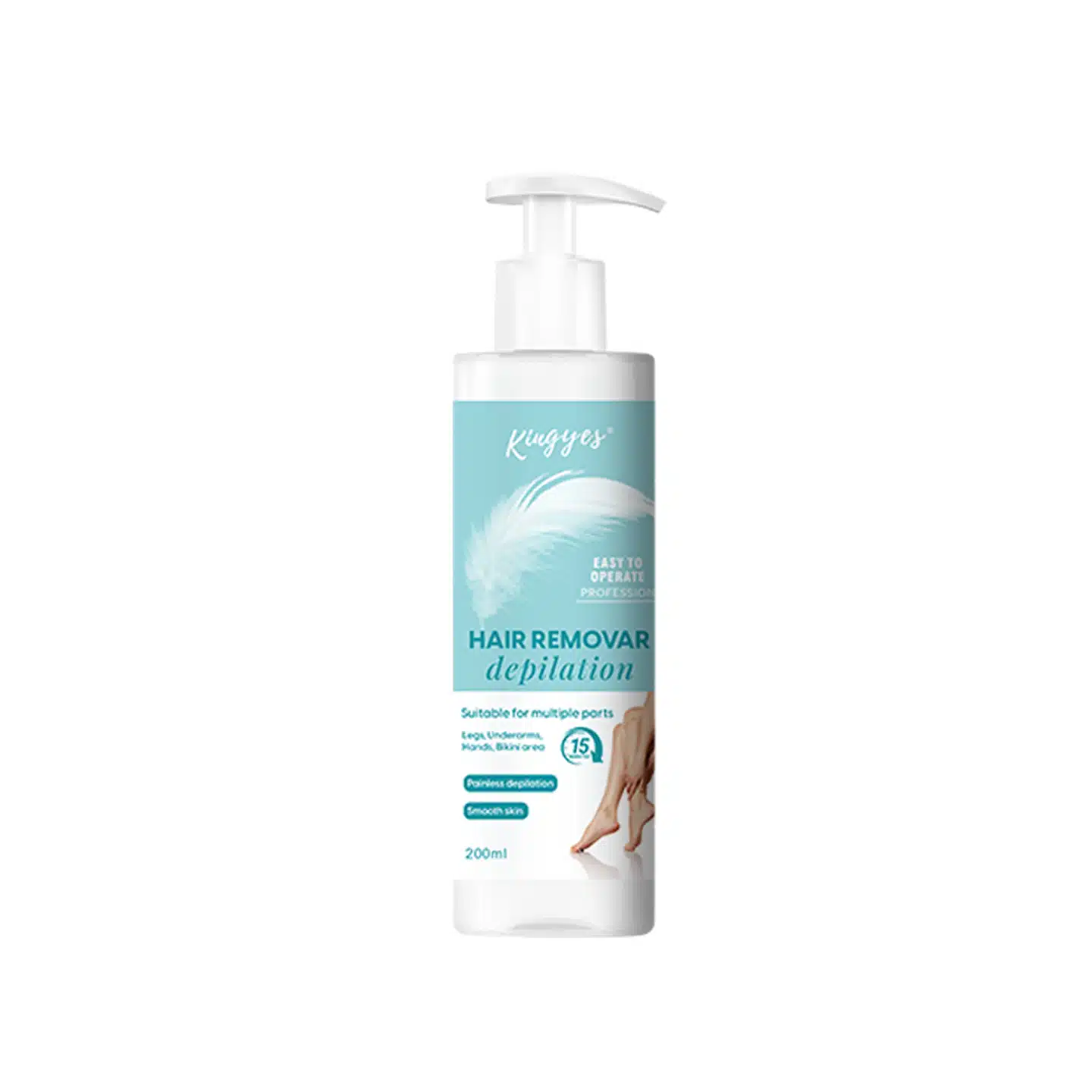
¿Son buenos o malos los aceites capilares?
Índice
Te desvelamos los secretos de estos aceites y te ayudamos a elegir el más adecuado para tu tipo de cabello. Sigue leyendo para descubrir aceite capilar puede nutrir, suavey revitaliza tu cabello.
¿Qué son los aceites capilares y cómo actúan?
Aceites capilares son productos especializados diseñados para nutrir, hidratoy suave su cabello. Suelen contener aceites naturales como aceite de argán, aceite de cocoy aceite de jojoba. Estos aceites penetran en el tallo del cabello, hidratar el cutículay ayuda domar el encrespamiento.
Ingredientes clave de los aceites capilares
- Aceite de argán: Rico en vitaminas, ayuda a hidrato y suave el pelo.
- Aceite de ricino: Promueve crecimiento del vello y nutre el cuero cabelludo.
- Aceite de coco: Excelente para cabello secoes hidrata y añade brillo.
- Aceite de jojoba: Imita los aceites naturales del cuero cabelludo, adecuado para pelo fino.
¿Los aceites capilares son buenos o malos para el cabello?
La gran pregunta: Son aceites capilares ¿bueno o malo? La respuesta no es blanca o negra. Aceites capilares pueden ser increíblemente beneficiosas si se utilizan correctamente, pero pueden causar problemas si se emplean mal.
Lo bueno
- Alimentar y hidrato el cabello y el cuero cabelludo.
- Suave encrespamiento y dar brillo.
- Protege el cabello de peinado con calor daños.
Lo malo
- El uso excesivo puede provocar cabello graso.
- Un aceite inadecuado puede no tipo de cabello.
- Posible acumulación si no se lava correctamente.
Beneficios del uso de aceites capilares
1. Nutrir el cuero cabelludo
Aceites capilares nutrir el cuero cabelludo, fomentando un entorno saludable para el crecimiento del cabello. Aceites como aceite de romero y aceite del árbol del té puede incluso ayudar con los problemas del cuero cabelludo.
2. Hidratar el cabello seco
Para los que tienen cabello secoLos aceites proporcionan humedad. Aceite de coco y aceite de argán son especialmente eficaces.
3. Alisar y domar el encrespamiento
Los aceites ayudan a alisar la cutículareduciendo encrespamiento y volantes. De este modo, el cabello queda liso y suave.
Posibles inconvenientes de los aceites capilares
1. Pesar el cabello fino
Algunos aceites pueden ser demasiado pesados para pelo finoque hace que parezca lacio. Opte por ingrávido fórmulas como verbo fantasma ingrávido aceite capilar.
2. Acumulación en el cuero cabelludo
Si se aplica demasiado aceite, puede acumularse, lo que afecta a la salud del cuero cabelludo y puede dificultar la digestión. crecimiento del vello.
3. 3. Reacciones alérgicas
Compruebe siempre el ingredientes clave. Algunas personas pueden ser sensibles a ciertos aceites, por lo que es aconsejable realizar una prueba de parche.
Cómo elegir el aceite adecuado para tu tipo de cabello
Cabello fino
- Aceites ligeros como aceite de pepitas de uva y aceite de jojoba.
- Evite los aceites pesados que puedan apelmazar el cabello.
Cabello grueso o áspero
- Aceite de ricino y aceite de argán proporcionar hidratante.
- Ayuda a domesticar Cabello encrespado y alborotado.
Cabello teñido
- Utilice aceites seguros para cabello teñidocomo aceite de marula.
- Protege el cabello sin decolorarlo.
Los mejores aceites capilares
| Necesidad capilar | Aceite recomendado | Beneficios |
|---|---|---|
| Cabello seco | Aceite de coco | Profundo hidratantereduce encrespamiento |
| Cabello fino | Aceite Capilar Ingrávido Verb Ghost | Ingrávido hidratación |
| Cabello dañado | Olaplex No.7 Aceite Fijador | Repara y refuerza |
| Salud del cuero cabelludo | Aceite del árbol del té | Calma y limpia el cuero cabelludo |
| Control del encrespamiento | Tratamiento Moroccanoil Original | Suaviza y añade brillo |
| Crecimiento del cabello | Aceite de ricino | Promueve crecimiento del vello |
Cómo aplicar correctamente el aceite capilar
- Empezar poco a poco: Utiliza unas gotas; siempre puedes añadir más.
- Centrarse en los fines: Aplicar de medios a puntas, evitando el cuero cabelludo si no es necesario.
- Cabello húmedo o seco: Los aceites pueden utilizarse en cabello húmedo antes del peinado o en cabello seco para el acabado.
- Distribución uniforme: Utiliza un peine o los dedos para distribuir el aceite uniformemente.
Tratamientos caseros con aceite para el cabello
Mezcla de aceites nutritivos para el cabello
Ingredientes:
- 2 cucharadas aceite de argán
- 1 cucharada aceite de jojoba
- 5 gotas aceite de romero
Instrucciones:
- Mezclar todo aceites en un cuentagotas botella.
- Solicitar cabello y cuero cabelludomasajeando suavemente.
- Dejar actuar al menos 30 minutos o toda la noche.
- Lavar con un champú suave.
Preguntas frecuentes sobre los aceites capilares
1. ¿Puedo utilizar aceite capilar en el cabello fino sin engrasarlo?
Sí Elija una ingrávido aceite como aceite de pepitas de uva o verbo fantasma aceite capilar ingrávido a nutrir sin apelmazar el cabello.
2. ¿Con qué frecuencia debo aplicar aceite capilar?
Depende de su tipo de cabello y necesidades. Para cabello seco2-3 veces por semana puede ser beneficioso. Para otros, una vez a la semana es suficiente.
3. ¿Son adecuados los aceites capilares para el cabello teñido?
Absolutamente. Busque aceites seguros para cabello teñidocomo aceite capilar ouaipara proteger y nutrir sin perder el color.
4. ¿Pueden los aceites capilares ayudar al crecimiento del cabello?
Algunos aceites, como aceite de ricinose sabe que fomentan crecimiento del vello por nutrir el cuero cabelludo y fortalecer los folículos pilosos.
5. ¿Cuál es la mejor manera de eliminar el exceso de grasa del cabello?
Utiliza un champú suave, que puede requerir dos lavados. Evite los champús fuertes que eliminan los aceites naturales.
Conclusión: Aprovecha el poder de los aceites capilares
Aceites capilares puede cambiar las reglas del juego en su cuidado del cabello rutina. Ellos nutrir, hidratoy suave su cabello, abordando diversas preocupaciones capilares. Tanto si tiene pelo fino, cabello secoo están luchando encrespamientohay un aceite para ti.
Principales conclusiones
- Elija el aceite adecuado: Adapte el aceite a su tipo de cabello y necesidades.
- La moderación es esencial: Evitar la aplicación excesiva para evitar la untuosidad.
- Cuestiones de aplicación: Una aplicación adecuada garantiza los mejores resultados.
- Ingredientes naturales: Aceites como argán, cocoy jojoba ofrecen numerosas ventajas.
- Salud capilar: Su uso regular puede mejorar salud capilar y apariencia.
Comentarios

¿Qué va primero, el iluminador líquido o los polvos?
¿Alguna vez te has parado frente al espejo de maquillaje preguntándote si aplicar el iluminador líquido antes o después de los polvos?

¿Te fijas antes o después del spray fijador?
El mundo del maquillaje está lleno de consejos, trucos y técnicas para conseguir un look de maquillaje impecable y duradero.

Cómo utilizar la loción corporal para una piel suave e hidratada
¿Quieres saber cuál es la mejor forma de utilizar la loción corporal para conseguir una piel suave y resplandeciente?

¿Es mejor poner espuma sobre el pelo mojado o húmedo?
¿Alguna vez te has preguntado si aplicar espuma para el pelo sobre el cabello húmedo o mojado marca la diferencia?

What Color Should I Dye My Hair? The Science-Backed Guide
Are you stuck? You want to change your hair. But picking the wrong color could be a big mistake.
- +86 151 1839 7303
- [email protected]
- L-D 07:00-23:00
Etiquetas

How to Choose a Reliable Cosmetic OEM Manufacturer in China?
If you want to develop a spray it is ESSENTIAL to find a manufacturer, with expertise in this area.
You possess a concept.
Step 4: Comprehend the Rules to Your Property.

How to Get Hair Dye Off Skin: The Only Guide You Need
Then, you look closer.
There is a spot on your head. It is not hair. It is your skin. It is blue. Or maybe it is red.

How Often Should You Wash Your Hair? The Ultimate Guide
You look at your hair.
It looks flat. It looks dull.
You touch your roots.






